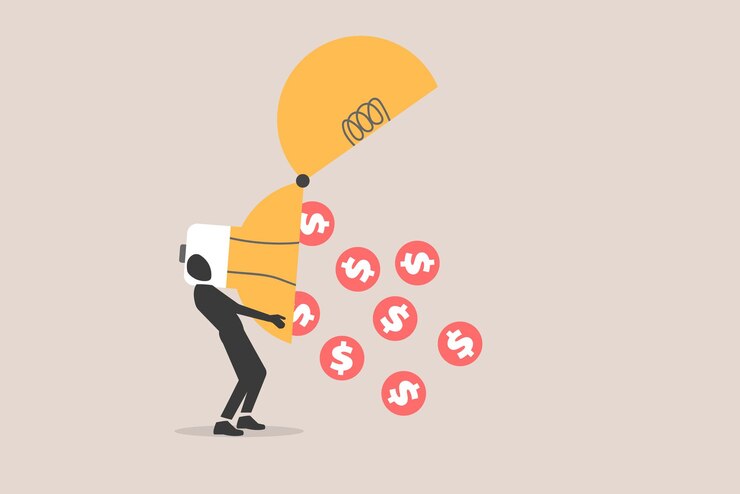Saving money can feel hard, especially if you think it means giving up things you love. But saving doesn’t have to mean sacrifice. There are smart ways to save money every month without feeling deprived. These tips are simple and easy to follow. They’ll help you keep more of your money while still enjoying life. Let’s dive in!
Track Your Spending
The first step to saving money is knowing where it goes. Many people spend without thinking. They buy coffee, snacks, or small things that add up quickly. To avoid this, write down everything you spend.
Here’s how:
- Keep a notebook or use an app on your phone.
- Write down every purchase, no matter how small.
- At the end of the week, look at your list.
For example, if you spend $5 on coffee every day, that’s $35 a week. Knowing this helps you decide if it’s worth it. You might find areas where you can cut back without feeling bad.
Make a Simple Budget
A budget is like a plan for your money. It tells you how much to spend and save each month. Think of it as a map that helps you reach your goals.
Here’s how to make one:
- Write down how much money you earn each month.
- List all your fixed expenses, like rent, utilities, and groceries.
- Subtract these expenses from your income.
- Use the leftover money for savings and fun things.
For example, if you earn $1,000 a month and your expenses are $800, you’ll have $200 left. You could save $100 and use the other $100 for hobbies or treats.
A budget doesn’t have to be perfect. Start simple and adjust as you go. Over time, you’ll get better at sticking to it.
Save a Little Every Day
Saving money doesn’t have to be hard. You don’t need to save hundreds of dollars at once. Start small. Even saving $1 or $2 a day makes a difference over time.
Think of saving like filling a piggy bank. Every coin you add makes the bank heavier. Over months or years, those coins add up to a lot of money.
Here’s how to start:
- Put spare change in a jar at home.
- Use a savings app that rounds up your purchases and saves the extra cents.
- Set aside a small part of your paycheck each month.
Saving gives you peace of mind. It helps you handle emergencies, like car repairs or medical bills. Plus, it lets you plan for fun things, like vacations or gifts.
Cook Meals at Home
Eating out is expensive. A single meal at a restaurant can cost $10 or more. Cooking at home is cheaper and healthier. Plus, you can make food you really enjoy.
Here’s how to save:
- Plan meals for the week and make a shopping list.
- Buy ingredients in bulk, like rice, beans, or pasta.
- Cook large portions so you have leftovers for lunch.
For example, if you spend $50 a week on takeout, cooking at home could cut that to $20. That’s $30 saved every week, or $120 a month.
You don’t have to give up eating out completely. Just do it less often. For instance, treat yourself to a restaurant meal once a month instead of every week.
Use Cash Instead of Cards
Using cash instead of credit or debit cards can help you spend less. When you see money leaving your hands, it feels more real. This makes you think twice before spending.
Here’s how to try this:
- Take out a set amount of cash each week for spending.
- Use it for groceries, gas, and other expenses.
- Leave your cards at home to avoid overspending.
For example, if you take $50 for groceries, you’ll stop shopping once you run out of cash. This keeps you from buying things you don’t need.
Shop with a Plan
Impulse buying is a big reason people overspend. Stores are designed to make you want things you don’t need. To avoid this, shop with a plan.
Here’s how:
- Make a list before you go shopping.
- Stick to the list and avoid distractions.
- Wait 24 hours before buying something you didn’t plan to.
For example, if you see a shirt you like, wait a day before buying it. If you still want it after 24 hours, it might be worth it. Often, you’ll forget about it and save money.
Cut Subscription Costs
Many people pay for subscriptions they don’t use. These could include streaming services, gym memberships, or magazines. Cutting these costs can save you a lot of money.
Here’s what to do:
- Make a list of all your subscriptions.
- Cancel the ones you don’t use or don’t enjoy.
- Look for cheaper alternatives.
For example, if you pay $15 a month for a streaming service you rarely watch, canceling it saves you $180 a year. You can use that money for something you really want.
Use Discounts and Coupons
Stores and websites often offer discounts and coupons. Using them can save you money on things you already buy.
Here’s how:
- Check for coupons before shopping online.
- Use apps that find discounts automatically.
- Sign up for store emails to get special offers.
For example, if you buy $50 worth of groceries and use a 10% coupon, you’ll save $5. That might not seem like much, but it adds up over time.
Rent Instead of Buy
Sometimes, renting is cheaper than buying. For example:
- Rent tools or equipment instead of buying them.
- Borrow books from the library instead of buying them.
- Use rental services for clothes or accessories you only need once.
For instance, if you need a lawnmower for one weekend, renting it for $20 is cheaper than buying one for $200. This saves you money and space.
DIY Instead of Paying Others
Doing things yourself can save you money. Many tasks, like cleaning or fixing things, don’t require special skills. With a little effort, you can do them on your own.
Here’s how:
- Clean your house instead of hiring a cleaner.
- Fix small problems, like painting or tightening screws.
- Learn basic skills, like sewing or gardening.
For example, if you pay $50 for a cleaning service, doing it yourself saves you that money. Over a year, that’s $600.
Avoid Buying Things You Don’t Need
It’s easy to spend money on things you want but don’t need. A new phone, fancy clothes, or expensive meals might feel good at the moment. But they can drain your wallet quickly.
Before buying something, ask yourself:
- Do I really need this?
- Will I still want it next month?
- Can I wait before buying it?
For example, if you see a pair of shoes you like, wait a week before buying them. If you still want them after a week, they might be worth it. Often, you’ll forget about them and save money.
Celebrate Small Wins
Saving money is a journey. It takes time and effort. To stay motivated, celebrate small wins along the way. This reminds you why you started and keeps you excited.
Here’s how:
- Treat yourself when you hit a savings goal.
- Share your achievements with friends or family.
- Reflect on how far you’ve come.
For example, if you save $100 in a month, reward yourself with a small treat, like a movie night. This makes saving fun and rewarding.
Automate Your Savings
Automating your savings makes it easier to stick to your goals. You won’t have to think about it—it happens automatically.
Here’s how:
- Set up automatic transfers to your savings account.
- Decide how much to save each month.
- Adjust as your income grows.
For example, if you automate $50 to savings each month, you’ll have $600 in a year. Over five years, that’s $3,000. Add interest from a savings account, and your money grows even faster.
Final Thoughts
Saving money doesn’t have to mean giving up things you love. By tracking your spending, making a budget, and cutting unnecessary costs, you can save without feeling deprived. Cook at home, use cash, and shop with a plan. Cut subscription costs, use discounts, and rent instead of buying. Do things yourself, avoid impulse buys, and celebrate small wins.
Your financial future is in your hands. Start today, and watch your savings grow. Remember, every step counts. Good luck!






Deixe um comentário